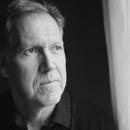The Monks of Norcia recently scored a #1 Billboard Album with their new album "Benedicta."The Monks of Norcia team up with 11-time Grammy Award-winning producer Christopher Alder and Grammy Award-winning engineer Jonathan Stokes to release BENEDICTA: Marian Chant from Norcia, an album of stunning Gregorian chant that transports the listener to the Monks' idyllic monastery in Italy. Their debut major label recording, BENEDICTA, consists of 33 tracks of Marian chant, including the well known "Regina Caeli" and "Ave Regina Caelorum" as well as original and previously unreleased songs.
Hallels: Thank you so much for doing this interview with us. Just briefly tell us who are the Monks of Norcia?
We are a community Benedictine monks, founded in 1998 in Rome. We transferred to Norcia in 2000. Norcia is the birthplace of St. Benedict, and the monastery is built on the site of the fifth-century family home.
Hallels: What's a typical day in the life of a monk like?
The monastic day is a carefully crafted synthesis of public prayer, private prayer with the Scriptures in the cell, work (manual, clerical and intellectual) and study. The "skeleton" of the schedule around which everything else is constructed is the Divine Office: nine moments of common prayer (including the Mass) placed at certain intervals throughout the day. Some of those prayer times are long (an hour and a half) some are short (ten minutes). But the point of the structure is to help the monk to pray without ceasing. We get up early (3:40 am) because the first prayer of the day (called Vigils or Matins) is at 4:00. The last prayer of the day (Compline) is at 7:45 pm. It's a full day!
Hallels: On your biography, you mentioned that music is very important to monastic life, how are the two related?
Our public prayer is always sung. Why? St. Augustine says: Cantare amantis est: a good paraphrase might be: "only the lover sings". Our singing is the expression of our love-longing for God. Now the texts we sing are primarily Scriptural, and the melodies are very ancient, some of them technically demanding. The result is that there is plenty of material both for the intellect and the heart. We pray with our lips, with our bodies, with our emotions and with our minds. The music is the vehicle for all of this.
Hallels: What do you think is the value of chants for an average Christian?
I would say that the average Christian is unaware of the chant: it's a tradition of sung prayer going back hundreds, even thousands of years, with its roots in the chants of the Jewish synagogue. Most of the texts are taken from the psalms, and the melodies are glorious. But it's like a treasure chest hidden away up in the attic, and the key has been lost. First you have to realize that the treasure is there; then you have to find the key. With our CD we're saying: here's a map for the treasure hunt. If you find the treasure chest, we'll also give you the key.
Hallels: Tell us about your brand new album, BENEDICTA, why did you decide to make an album?
The title "Benedicta" is short for Benedicta tu in mulieribus (Lk 1:42), the words which Elizabeth used when greeting Mary. The chant selections are taken from Marian feast days. Marian devotion is important to us, because Mary is a model disciple: with her assent to the angel, "let it be done to me according to your word", she teaches us how to respond to the will of God. She's also a powerful prayer partner, as we intercede for the needs of the world. We wanted to make an album simply to share our experience of prayer with our friends.
Hallels: Are the songs on the new album liturgical chants from long ago or are they newly written? Or both?
The manuscript evidence for chant texts goes back to the 8th century; the melodies were written down about a century later. But both texts and melodies go back into "time out of time", handed down by oral tradition. Some of the pieces on the CD come from this ancient layer. There are also chants from the High Middle Ages, some from the 16th century and later. It's not a homogenous repertoire. On our CD we included on original composition by Fr. Basil, our choirmaster, who composed both text and music. As the Gospel says, the wise householder "brings out of his treasure what is new and what is old" (Mt 13:52).
Hallels: Were you excited that the album went to #1 on the Billboard Classical Album chart?
It's gratifying to see the success of the album: that means that lots of people are listening to this music. I'm hopeful it will touch their hearts.
Hallels: Finally, how can an ordinary Christian utilize the songs BENEDICTA in his or her own prayer life?
Prayer is like language. We learn to speak from our mother's lips, she gives us the words with which we encounter the world. Similarly, the Church gives us the words with which we encounter God, and the Bible is our dictionary. Now just as language gives us a broad spectrum from spontaneous conversation to classical literature, so it is with the language of prayer: there is spontaneous expression of prayer in our own words, and there is the classical literature of prayer. The Psalter is the Christian prayer book par excellence, in which the inspired prayer of the psalmist becomes our classical literature, and by memorizing its expressions and turns of phrase, we are given the words we need to pray. Now the psalms were meant to be set to music, and the chant is a very ancient form of psalm-singing. Our new CD gives one example of such sung prayer; we hope it will inspire our listeners to discover a new world of beauty and spiritual nourishment.


















